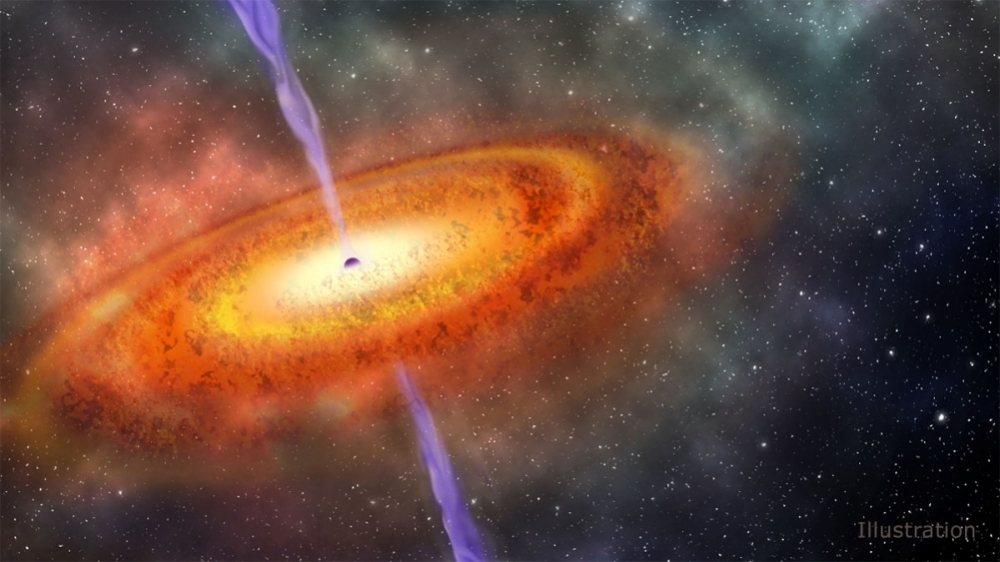

Young researchers and graduate students from any country have until April 15 to apply for this 11-day seminar on the astrophysics of the reionization era. Courses start on July 28 at the University of São Paulo (photo: Robin Dienel/Carnegie Institution for Science)
Young researchers and graduate students from any country have until April 15 to apply for this 11-day seminar on the astrophysics of the reionization era. Courses start on July 28 at the University of São Paulo.
Young researchers and graduate students from any country have until April 15 to apply for this 11-day seminar on the astrophysics of the reionization era. Courses start on July 28 at the University of São Paulo.

Young researchers and graduate students from any country have until April 15 to apply for this 11-day seminar on the astrophysics of the reionization era. Courses start on July 28 at the University of São Paulo (photo: Robin Dienel/Carnegie Institution for Science)
By Maria Fernanda Ziegler | Agência FAPESP – Registration is open until April 15, 2019, for the São Paulo School of Advanced Science on First Light: Stars, Galaxies and Black Holes in the Epoch of Reionization, scheduled to take place on July 28-August 7, 2019, at the University of São Paulo’s Institute of Astronomy, Geophysics and Atmospheric Sciences (IAG-USP) in São Paulo, Brazil.
The event is supported by FAPESP via its São Paulo School of Advanced Science (SPSAS) program. One hundred places are available for graduate students and young researchers, half from Brazil and half from other countries. Air travel and accommodation will be provided free of charge for participants who live outside São Paulo City.
The purpose of the School is to discuss the processes and events thought to have occurred when the Universe was in its infancy and introduce the next generation of astronomers to the theoretical and observational astrophysics of the Epoch of Reionization (EoR), a period when the first stars and galaxies formed, beginning not long after the Big Bang and lasting until the Universe was approximately 1 billion years old.
“It’s a very hot topic in astrophysics and only just starting to be studied. Today’s telescopes and detectors can’t detect light from the first stars formed in the Universe, which is absorbed by the surrounding gas. This gas is neutral, so the first stars can’t be seen with optical equipment,” said Laerte Sodré Jr., Full Professor at IAG-USP and cochair of the School’s scientific organizing committee.
The study of the first stars and galaxies requires the use of radio waves (21 cm radiation). “However, this radiation is the most commonplace in the Universe, so the problem isn’t detecting it but filtering out all the interference, separating the wheat from the chaff. There’s a huge amount of emission in this part of the spectrum. Currently, the focus is on developing equipment and techniques that can detect the first stars or separate the vast contamination we know exists from the signal we imagine exists,” Sodré Jr. said.
The School will comprise eight short courses on theoretical and observational developments in the astrophysics of the EoR, so called because starting approximately 400 million years after the Big Bang, all the gas in the Universe went from neutral to reionized due to the action of the ultraviolet light from the first stars.
The first stars and galaxies can be detected by optical means only after the end of the EoR, when the Universe was almost 1 billion years old and light from these early objects could travel more freely.
The eight courses will feature professors and researchers from several countries lecturing on the Cosmic Dark Ages; the formation of the first stars, galaxies and black holes, including the Milky Way and other descendants; and the new instruments, surveys and modeling techniques relevant to research on the EoR.
The lectures will also address the latest telescopes and observation methods, including the James Webb Space Telescope, the successor to the Hubble; the Subaru Prime Focus Spectrograph; and the Giant Magellan Telescope (GMT), which is being built in Chile’s Atacama Desert by an international consortium whose Brazilian partner is FAPESP.
“We can’t use optical means for access to the first light, but the physical phenomena that affect these radio waves are the ones we know now and can be studied with optical equipment,” Sodré Jr. said. “In any case, future radio telescopes will be able to detect the first stars and galaxies, while next-generation optical instruments will be able to examine the end of the Epoch of Reionization in detail.”
Some of the lectures presented as part of the School will be designed to draw connections with currently used techniques and show how they can be applied in research on early galaxies.
Registration and more information: www.firstlight.iag.usp.br.
Republish
The Agency FAPESP licenses news via Creative Commons (CC-BY-NC-ND) so that they can be republished free of charge and in a simple way by other digital or printed vehicles. Agência FAPESP must be credited as the source of the content being republished and the name of the reporter (if any) must be attributed. Using the HMTL button below allows compliance with these rules, detailed in Digital Republishing Policy FAPESP.





